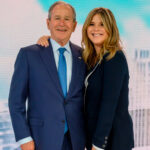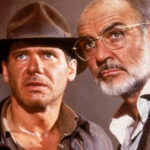

Amazon, founded by Jeff Bezos in 1994, started as a simple online bookstore and quickly transformed into one of the giants of global e-commerce. But Amazon’s trajectory goes far beyond its modest beginnings. This technology and retail colossus is known not only for its vast range of products and services but also for its revolutionary innovations and bold strategies.
From the creation of the Kindle, which changed the way we read books, to the development of Amazon Web Services (AWS), which redefines cloud computing, the company has always been at the forefront of technology.
Moreover, Amazon has ventured into unexpected areas, such as acquiring movie studios and space exploration with Blue Origin.
In this text, we will explore some fascinating facts about Amazon and how it became a dominant force in various sectors.
1 – HOW DID THE NAME AMAZON COME ABOUT?
We are so familiar with the name Amazon that it might be surprising to learn that, initially, Jeff Bezos considered naming his site Cadabra, in reference to the term “Abracadabra”. However, Bezos abandoned this idea after his lawyer warned him about the similarity of the word to “cadáver”, which could have negative connotations.
Additionally, Bezos considered the name Relentless, and if you visit relentless.com, you will be redirected to Amazon’s website. In the end, the choice fell on Amazon, in honor of the mighty Amazon River.
2 – THE LOGO
Amazon’s famous logo was developed in the early 2000s. The arrow in the design symbolizes a smile, reflecting the company’s commitment to customer satisfaction.
Additionally, the arrow connects the letters A and Z, indicating that on Amazon’s site, you can find a wide range of products, from A to Z.
3 – A BELL RANG FOR EVERY PURCHASE
In the early days of Amazon, every time a sale was made, the team would ring a bell to celebrate the transaction. After that, everyone would stop to find out who made the purchase. However, with the skyrocketing sales, the bell was eventually deactivated because the constant noise became unbearable for everyone.
4 – BILLION-DOLLAR RETURN
One of Jeff Bezos’s first investors was his own parents. They withdrew US$ 300,000 from their retirement savings with the intention of supporting their son’s startup. To get an idea of the return on this investment, Amazon now generates over US$ 170 billion in revenue. Isn’t that impressive?
5 – SUPER FAST DELIVERY
You may already know that Amazon Prime offers fast shipping, but the company really outdid itself with a delivery made in 2019. A customer needed an urgent item for their Christmas dinner, and Amazon managed to make the delivery in Redondo Beach in just 13 minutes.
6 – MORE THAN 40 BRANDS
Amazon has its own private label called Amazon Basics, which, as the name suggests, offers essential products highly sought after by consumers, such as computer cables, mice, sheets, and towels. However, Amazon goes beyond that and owns over 40 brands, covering categories such as clothing, food, and much more.
7 – STRUGGLING FROM SELLING TOO MUCH
During Christmas 1998, Amazon faced a major challenge. With a very high volume of purchases and a still-small team, the company struggled to meet the demand.
To resolve the situation, the team enlisted the help of family and friends, who worked tirelessly to ensure that all deliveries were made in time for the festivities. Nowadays, Amazon avoids these issues by hiring temporary staff during peak periods.
8 – TWO PIZZAS
In 2002, Jeff Bezos introduced the “two pizzas” concept, which gained global notoriety. The idea is that teams should be composed of no more than 10 people, the ideal number for everyone to be satisfied with just two pizzas.
Bezos believes that larger teams struggle to discuss ideas effectively and communication among members becomes less fluid.
9 – SCREAMING TO RELIEVE STRESS
Anyone who works in retail knows that the holiday season can be quite stressful. In the early 2000s, Jeff Wilke, then the operations manager, created an innovative approach to help employees relieve stress.
Whenever a goal was achieved, employees had the opportunity to call the manager and scream as much as they wanted over the phone.
10 – KINDLE WOULD HAVE HAD A DIFFERENT NAME
Amazon’s team considered naming their e-reader device, the Kindle, Fiona, after a character in the science fiction book “The Diamond Age”.
The name Fiona wasn’t a random choice: in the book, the character has a machine that stores electronic versions of books, similar to how the Kindle functions.
11 – A COMPANY THAT LOVES ANIMALS
Amazon is passionate about dogs and prides itself on being a pet-friendly company. On the Seattle campus, there are over six thousand dogs that accompany their owners to work in the office.
12 – THE FIRST ITEM SOLD
One of Amazon’s early employees was Shel Kaphan, who created the initial version of the company’s website. Before joining Amazon, Kaphan worked at a company that developed the ScriptX language.
The creator of this language and Kaphan’s former colleague, John Wainwright, was Amazon’s first customer.
On April 3, 1995, Kaphan invited Wainwright to use Amazon’s service, and he purchased the book Fluid Concepts and Creative Analogies, the first product sold by the company.
13 – MOVIE PLATFORMS
Among Amazon’s subsidiaries are some of the most well-known platforms globally, such as IMDb, the leading movie and TV database, Twitch, Audible, and even the renowned film studio MGM.
14 – WHO PROVIDES ALEXA’S VOICE?
One of Amazon’s great mysteries involves Alexa’s voice. The company has never officially revealed who is behind the voice of the virtual assistant in its products. However, Brad Stone, author of the book Amazon Unbound, conducted extensive research within the community of narrators, voice actors, and dubbers and discovered the identity of Alexa’s voice.
Nina Rolle is the voice actress behind Alexa. She is a singer and voice actress from Colorado. Although Rolle does not list her work as Alexa’s voice on her resume, she is undoubtedly the one responsible for the virtual assistant.
Additionally, Amazon prohibits Nina Rolle from commenting on Alexa, making the subject completely restrictive.
15 – THE CHOICE OF THE COMPANY HEADQUARTERS
One of the most interesting curiosities about Amazon is the choice of its headquarters. When Jeff Bezos was deciding on Amazon’s business model, he established three criteria for choosing the ideal location for his company.
The first criterion was the presence of a large number of technical talents.
Secondly, he looked for a state with a relatively small population to ensure that only residents paid taxes on books purchased on the site. This is why Silicon Valley was ruled out, as it is located in a highly populated state.
The third criterion involved proximity to a major book distributor to ensure fast delivery times.
After analyzing factors such as taxes and the number of daily flights from the local airport, Bezos considered four cities in the western U.S.: Portland (Oregon), Lake Tahoe (Nevada), Boulder (Colorado), and Seattle.
The choice fell on Seattle, Washington, not only for its larger population, with 5.6 million residents at the time, but also for its strong presence of technology companies and proximity to the major book distributor in the U.S., Ingram, located about 350 miles away.
The story of Amazon is a remarkable example of innovation and exponential growth in the technology and retail sectors. Since its founding in 1994 as a simple online bookstore, the company has evolved into a global giant, offering a vast range of products and services.
Amazon’s transformation into one of the biggest names in e-commerce and technology is marked by innovations such as Amazon Prime, AWS, and the Alexa virtual assistant.
Additionally, the company has stood out for its pioneering logistical solutions and commitment to innovation, as demonstrated by the creation of cashier-less stores and the use of drones for deliveries.
Amazon’s journey reflects a combination of strategic vision, technological innovation, and adaptation to consumer needs, solidifying its role as a global market leader and influencing how we interact with commerce and technology.








